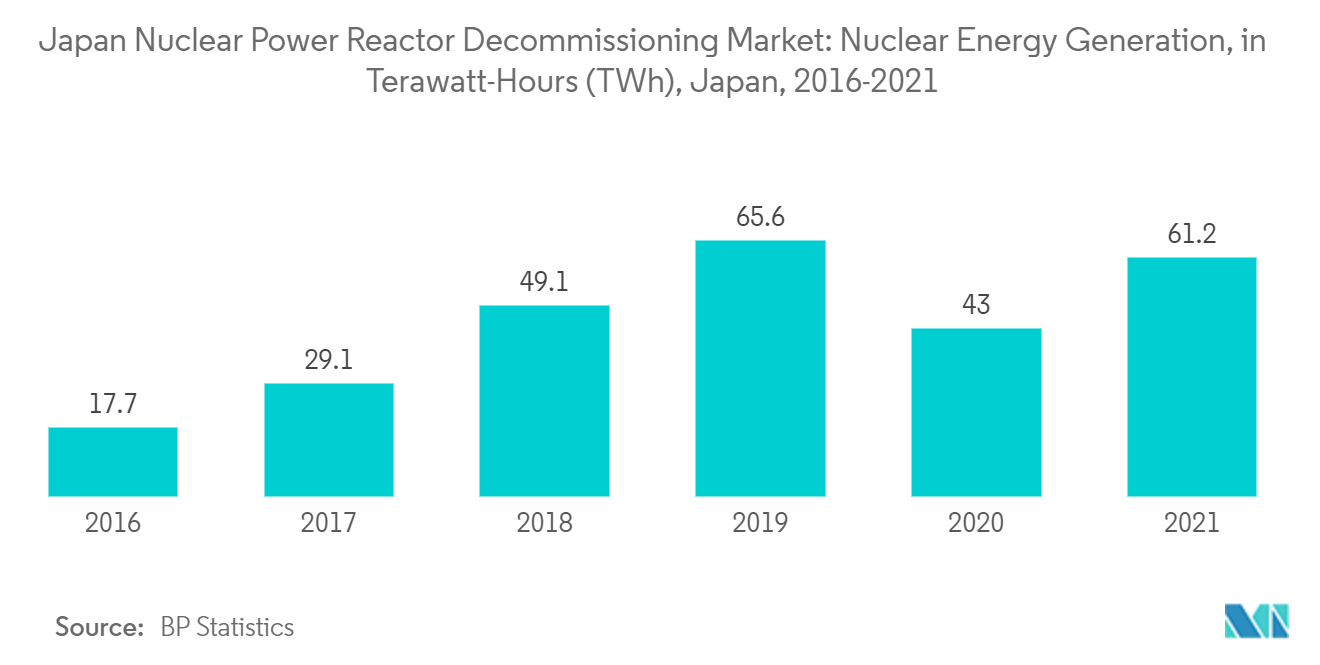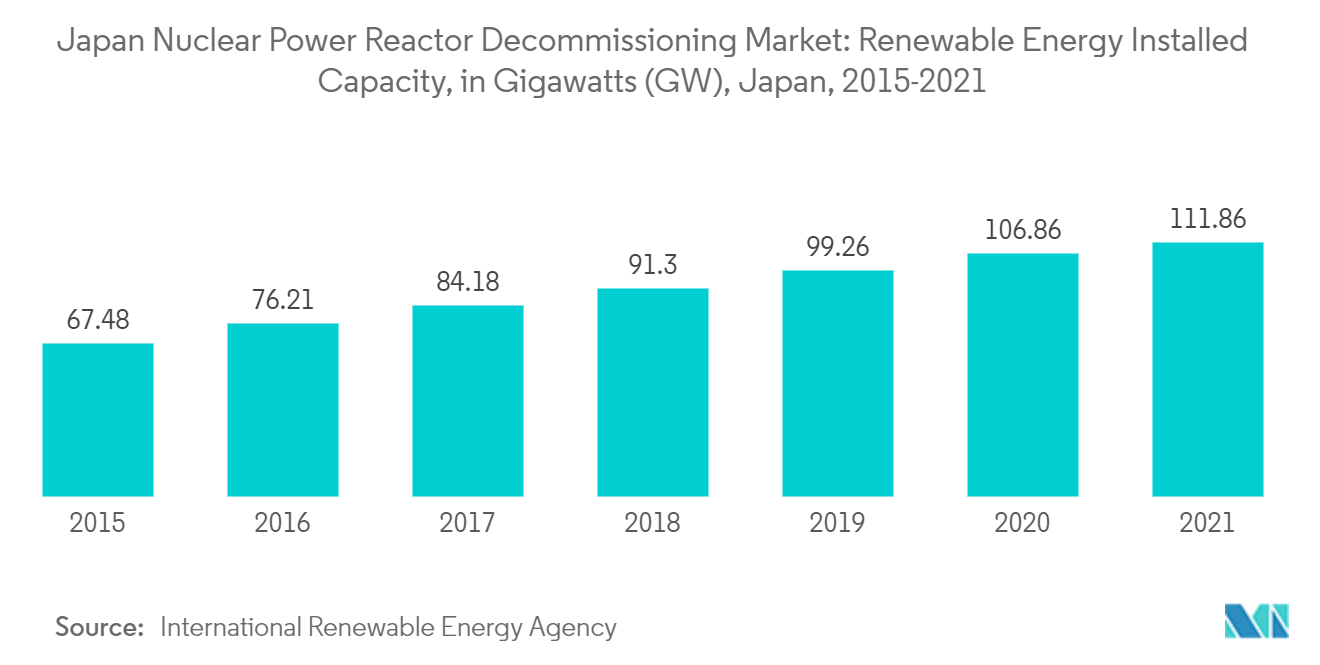Market Trends of Japan Nuclear Power Reactor Decommissioning Industry
This section covers the major market trends shaping the Japan Nuclear Power Reactor Decommissioning Market according to our research experts:
Commercial Power Reactor Expected to Dominate the Market
- Commercial nuclear power plants are the power plants deployed in the region to generate electricity and utilized in the national energy grid through which the generated electricity is transmitted and distributed to various sectors of the country. In Japan, the majority of nuclear power plants fall under the commercial reactor category.
- According to World Nuclear Association, 33 active commercial nuclear power plants exist in Japan. Moreover, two commercial power plants are in the construction stage, while one is in the planning stage.
- As of 2021, Japan has generated 61.2 TWh of electricity from its thirty-three nuclear reactors with a combined capacity of 31.68 GWe compared to 43 GWe in 2020. As of December 2022, the country has two nuclear reactors under construction with a combined total of 2.75 GWe, one reactor is under planning stages with a total of 1.38 GWe, and eight reactors with a combined capacity of 11.56 GWe under construction, planned, and proposed stages, respectively.
- The total power produced by nuclear energy in Japan in 2021 was 714.3 terawatt-hours (TWh), which was higher than the region produced in 2020, which was 655 TWh. Many countries in the region are still developing nuclear power for electricity, which is anticipated to hinder regional market growth.
- As of December 2022, Japan has shut down 27 nuclear reactors with a total capacity of 17128 MWe.
- For instance, in 2021, Japan's nuclear regulator approved Tokyo Electric Power Company's (Tepco's) decommissioning plan for the four reactors at its Fukushima Daini nuclear power plant, close to the damaged Fukushima Daiichi plant. The decommissioning process is expected to take 44 years. The 10,000 fuel assemblies held in the units' storage pools will be removed over 22 years and will be reprocessed.
- Hence, owing to the above points, the commercial power rector segment is likely to dominate the Japan nuclear power reactor decommissioning market during the forecast period.

Increasing Renewable Energy Expected to Drive the Market
- Japan renewable power sector is likely to thrive more in the near future, mainly due to the government programs for an energy transition to cleaner power generation sources and the continuous improvement in renewable technology. The country has set many climate goals in the recent picture to achieve carbon neutrality.
- In early 2020, the country announced its plans to increase its reliance on renewable power to 24% of its energy mix by 2030. As Japan is moving away from nuclear power generation, it is turning to renewable energy sources, such as solar, wind, and tidal power, to reduce its dependence on overseas production and kickstart innovation in its domestic energy sector.
- In February 2022, the Ministry of Economy, Trade, and Industry (METI) allocated 675 MW of PV capacity across three different auctions in 2021. The average bid price ranged from JPY 10.31/kWh to JPY 10.82/kWh, with the lowest bid price at JPY 10.23/kWh. Thus, such government programs to encourage solar energy growth in the country are likely to drive the market during the forecast period.
- Electricity generation through renewable energy has increased significantly in the last decade. In 2021, Japan had renewable energy installed capacity of 111.86 GW compared to 67.48 GW in 2015. The growth was recorded at around 65%. The generation capacity is expected to follow a similar trend during the forecasted period.
- For instance, In May 2022, Clean Energy Connect Co Ltd announced that it would deploy 70 MW of solar power generating capacity for the benefit of the NTT Group in Japan. The project will be developed under an electricity procurement contract with NTT Anode Energy Corp, which will supply the output mainly to the telecommunications group through an offsite power purchase agreement (PPA). The project is expected to be finalized by 2023.
- Hence, owing to the above points, increasing renewable energy is expected to drive the Japan Nuclear Power Reactor Decommissioning Market during the forecast period.

